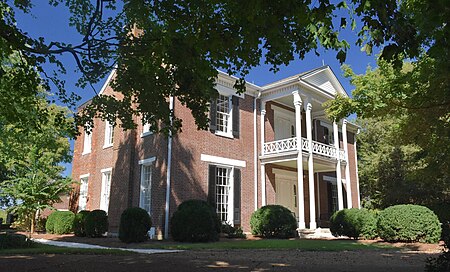James P. Johnson House
Central passage plan architecture in TennesseeGreek Revival houses in TennesseeHouses completed in 1854Houses in Williamson County, TennesseeHouses on the National Register of Historic Places in Tennessee ... and 2 more
National Register of Historic Places in Williamson County, TennesseeWilliamson County, Tennessee Registered Historic Place stubs

The James P. Johnson House is a building and property in Thompsons Station, Tennessee, dating from 1854. It has been listed on the National Register of Historic Places since 1988. It has also been known as Laurel Hill. It includes Greek Revival and Central passage plan and other architecture.The house is notable for its association with the Laurel Hill Stock Farm, a famous livestock farm founded in the 1830s by Thomas Johnson, which was later inherited by his son, James P. Johnson, in 1853. During the 1850s the Laurel Hill Stock farm was expanded to over 500 acres and became known as one of the best livestock breeding farms in middle Tennessee.
Excerpt from the Wikipedia article James P. Johnson House (License: CC BY-SA 3.0, Authors, Images).James P. Johnson House
Columbia Pike,
Geographical coordinates (GPS) Address Nearby Places Show on map
Geographical coordinates (GPS)
| Latitude | Longitude |
|---|---|
| N 35.841388888889 ° | E -86.882777777778 ° |
Address
Columbia Pike 4325
37064
Tennessee, United States
Open on Google Maps







